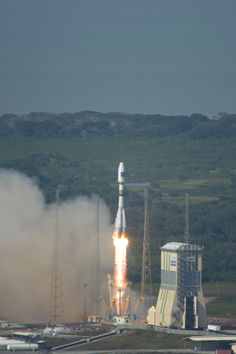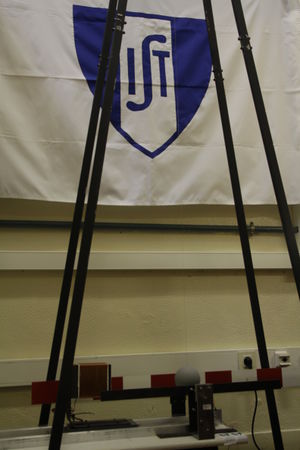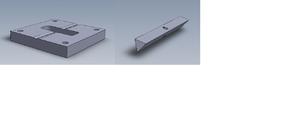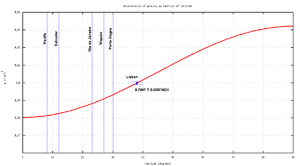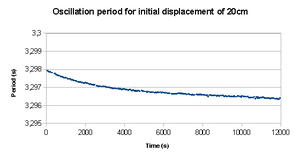Difference between revisions of "World Pendulum"
| Line 176: | Line 176: | ||
=Data fitting= | =Data fitting= | ||
| − | + | References <ref name="serway"></ref> <ref name="rcl">http://rcl-munich.informatik.unibw-muenchen.de/</ref> <ref name="olsom">Nelson, Robert; M. G. Olsson (February 1987). "The pendulum - Rich physics from a simple system". American Journal of Physics 54 (2): | |
| + | doi:10.1119/1.14703</ref> <ref name="gauld">Pendulums in the Physics Education Literature: A Bibliography, Gauld, Colin 2004 Science & Education, issue 7, volume 13, 811-832 | ||
| + | (http://dx.doi.org/10.1007/s11191-004-9508-7)</ref> <ref name="qureshi">The exact equation of motion of a simple pendulum of arbitrary amplitude: a hypergeometric approach, M I Qureshi et al 2010 Eur. J. Phys. 31 1485(http://dx.doi.org/10.1088/0143-0807/31/6/014)</ref> <ref name="ochs"> comprehensive analytical solution of the nonlinear pendulum, Karlheinz Ochs 2011 Eur. J. Phys. 32 479 (http://dx.doi.org/10.1088/0143-0807/32/2/019)</ref> give a very good description of the mathematical model needed to fit the data once established. The main harmonic equation to be fitted can be expressed generally: | ||
<math> | <math> | ||
Revision as of 15:25, 10 April 2018
Contents
Description
Rockets are best sent to space in equatorial latitudes. This is mainly due to the fact that the standard gravity is gradually reduced from the poles till the equator.
The aim of this world experiment is to provide a constellation of pendulums across several latitudes to investigate the gravitational constant behaviour around the globe[1]. Several countries among CPLP community are expected to contribute to this effort through their own high schools in complement to the e-lab on-line offer.
Lisbon, Ilhéus and Rio de Janeiro will host the first pendulums which allow a data fitting to the theoretical equation.
Links
- Video Faro: rtsp://elabmc.ist.utl.pt/worldpendulum_ccvalg.sdp
- Video Lisboa: rtsp://elabmc.ist.utl.pt/worldpendulum_planetarium.sdp
- Video Ilhéus: rtsp://elabmc.ist.utl.pt/worldpendulum_ilheus.sdp
- Video Rio Janeiro: rtsp://elabmc.ist.utl.pt/worldpendulum_puc.sdp
- Video Maputo: rtsp://elabmc.ist.utl.pt/worldpendulum_maputo.sdp
- Video São Tomé: rtsp://elabmc.ist.utl.pt/wp_saotome.sdp
- Laboratory: Basic in e-lab.ist.eu
- Control room: World Pendulum
- Grade: *
Who likes this idea
Experimental apparatus
The pendulum dimensions that has been used was inspired in Dr. Jodl's design in Germany [2]. Minor changes have been introduced in the IST version. The following data have been used:
|
String length (not counting the sphere) |
Typical = 2705mm +/- 0.5mm |
|
Real length CCV_Alg/FARO |
2677mm +/- 0.5mm |
|
Real length UESC/ILHÉUS |
2705mm +/- 0.5mm |
|
Real length LISBON |
2677mm +/- 0.5mm |
|
Real length MAPUTO |
2609.8mm +/- 0.5mm @27ºC |
|
Real length SÃO TOMÉ |
2756.5mm +/- 0.5mm (r=40.9mm) |
|
Sphere mass |
2kg +/- 75g |
|
Sphere diameter |
81.2mm +/-1.5mm |
|
String |
Remanium(r) - Stainless steel (Nickel chromium) - 0,4mm |
|
Modulus of elasticity of string |
~200GPa |
|
Oscillation period measurement system |
Micro processor with 7,3728MHz - 30ppm crystal + laser + PIN photodiode |
|
Wire CTE (25-500ºC) (Coefficient of thermal expansion) |
~14 x 10-6 K-1 |
The experiment can be replicated very easily, as for local gravity determination it can be human operated without the photo-gate and the microprocessor. The stainless steel can be replaced by brass structures.
Local partners
The pendulum [3] is one of the simplest existing apparatus with a lot of physics inside. As a matter of fact only the exact measurement of the hanging string and its material quality has to be precise and carefully selected to have very accurate measurements. Choosing a heavy mass (e.g. 1-4 kg), the error regarding the period can be relatively reduced, allowing an accurate measurement with the use of a simple although precise chronometer.
A local apparatus manufacture is an easy task for those interested in their local "g" comparison with the remote experiment . The collection of data through a suitable social network could provide even more data for a complete description of “g's constants” around the globe. This “world experiment” could be a strong link among several schools allowing a propitious physics dissemination and dialogue.
You can find a detailed construction guide on the page Precision Pendulum.
Physics
The determination of earth gravitational force in different parts of the globe leads to interesting questions about how modelling in physics is so important. Starting from the basic premise that the gravitational accelerating force at sea level is constant, it can be very easily showed that this “constant” slightly changes and has to be corrected, mostly due to latitude. So, a very interesting approach to demystify science and some “constants” can be to pursuit the addition of successive stages of approximation to this estimate. The starting point of this undertaking is of course the basic approach to the geophysical model of the earth as a simple (i) non-rotating (ii) sphere, which gives the very well known approximation of 9.82 m/s2. By symmetry reasons, this model leads to a non-dependent latitude dependence on the gravitational acceleration and can consequently be measured anywhere on earth regardless of its latitude [2]. But as soon as we progress on the model, we will find that a rigorous measurement depends on latitude, mainly due to (i) the centrifugal force originating from the earth’s rotation and (ii) the non-spherical mass distribution caused by the earth’s poles flattening. These are the most prevalent effects, being almost of the same amplitude and far more important than (i) altitude, (ii) tides or (iii) sub-sole earth’s density. To conduct a fine-tuning to these evidences, you have to determine the earth’s acceleration in several latitudes across the globe, which is a difficult task for a student. With this advance in the earth’s acceleration determination, students could easily question the gravitational “constant” and study superior methods for the correct interpretation of the earth gravitational force.
A possible way to overcome this difficulty is to have a constellation of experiments across the globe easily reached by the internet.
CPLP as “latitude provider”
Mother language is a nationality indicator factor and currently it is the easiest way to define which nations are designated as brother countries (“países irmãos”). Basically only four languages are spread around the globe, being the Portuguese one of them. The Portuguese speaking community covers latitudes from ~30S to ~40N, almost a 75º span across the equator, giving you an opportunity to operate as a latitude provider for the world pendulum constellation (see Figure).
To conduct this world experiment you actually need to consider at least four spaced points in order to have a proper fit. But due to the strong non-linearity of the equation, more points are needed to provide a suitable adjustment, in particular on the knee close to the earth’s equator. Brazil itself can provide almost four crucial points close to the equator (e.g. Recife 8º, Salvador – 12º, Rio de Janeiro – 23º, Porto Alegre – 30º but lacks points with a latitude where the characteristic varies more strongly, the almost linear region around 30º to 60º, where Portugal can give two good points, e.g. 37º and 41º. Mozambique can contribute with 27º (Maputo) and S. Tomé e Principe or Brazil are both good choices to cover the equator. Angola could give complementary points for those acquired in Brazil, as the sensibility of the measurement is more pronounced close to the equator and the poles.
Data fitting
References [3] [4] [5] [6] [7] [8] give a very good description of the mathematical model needed to fit the data once established. The main harmonic equation to be fitted can be expressed generally:
[math] g_{n}(\varphi) = 9.780 326 772\times[1 + 0.005 302 33 \cdot sin^{2}(\varphi) - 0.000 005 89 \cdot sin^{2}(2\varphi)] [/math]
where \(\varphi\) is the latitude. This expression is one of the best experimental approximation resulting from the standardization agreement to adjusting the World Geodetic System datum surface (WSG84) to an ellipsoid with radius r1=6378137m at the equator and r2=6356752m polar semi-minor radius. This formula takes into account the fact that the Earth is an ellipsoid and that there is an additional increase in the acceleration of gravity when one moves nearer to the poles, due to a weaker centrifugal force. Nevertheless the students could derive a non-harmonic, first order approximation taking into account only the centrifugal force. As a second step they could include the two major errors, the centrifugal force and earth’s ellipsoid format.
The pictures shows the expected deviation from the “earth’s constant acceleration”, the real acceleration for each latitude. We have plotted the point already obtained with this apparatus in Lisbon and the marks over the expected latitudes for future partners. Of course these approximations do not include another important source of deviation from real data to the mathematical model, as we do not include the experimental source of error. However, those systematic errors could be under the expected precision needed (0,1%) for the former approximation if a careful design of the apparatus is considered. Nevertheless those errors must be discussed in advanced courses and their weight must be proved when considering the real pendulum.
References
- ↑ World Pendulum @ e-lab, Rui Figueiredo, Tiago Pereira, Samuel Balula, Rui Neto, Gesil Amarante-Segundo, Isabel Borges, H. Fernandes
- ↑ 2.0 2.1 World pendulum—a distributed remotely controlled laboratory (RCL) to measure the Earth's gravitational acceleration depending on geographical latitude, Grober S, Vetter M, Eckert B and Jodl H J, European Journal of Physics - EUR J PHYS , vol. 28, no. 3, pp. 603-613, 2007
- ↑ 3.0 3.1 Physics for scientists and engineers, 5th edition, Hardcourt College Publishers, R.Serway and R. Beichner, 2000
- ↑ http://rcl-munich.informatik.unibw-muenchen.de/
- ↑ Nelson, Robert; M. G. Olsson (February 1987). "The pendulum - Rich physics from a simple system". American Journal of Physics 54 (2): doi:10.1119/1.14703
- ↑ Pendulums in the Physics Education Literature: A Bibliography, Gauld, Colin 2004 Science & Education, issue 7, volume 13, 811-832 (http://dx.doi.org/10.1007/s11191-004-9508-7)
- ↑ The exact equation of motion of a simple pendulum of arbitrary amplitude: a hypergeometric approach, M I Qureshi et al 2010 Eur. J. Phys. 31 1485(http://dx.doi.org/10.1088/0143-0807/31/6/014)
- ↑ comprehensive analytical solution of the nonlinear pendulum, Karlheinz Ochs 2011 Eur. J. Phys. 32 479 (http://dx.doi.org/10.1088/0143-0807/32/2/019)
[3] http://rcl-munich.informatik.unibw-muenchen.de/
[4] Nelson, Robert; M. G. Olsson (February 1987). "The pendulum - Rich physics from a simple system". American Journal of Physics 54 (2): doi:10.1119/1.14703
[5] Pendulums in the Physics Education Literature: A Bibliography, Gauld, Colin 2004 Science & Education, issue 7, volume 13, 811-832 (http://dx.doi.org/10.1007/s11191-004-9508-7)
[6] The exact equation of motion of a simple pendulum of arbitrary amplitude: a hypergeometric approach, M I Qureshi et al 2010 Eur. J. Phys. 31 1485(http://dx.doi.org/10.1088/0143-0807/31/6/014)
[7] A comprehensive analytical solution of the nonlinear pendulum, Karlheinz Ochs 2011 Eur. J. Phys. 32 479 (http://dx.doi.org/10.1088/0143-0807/32/2/019)
